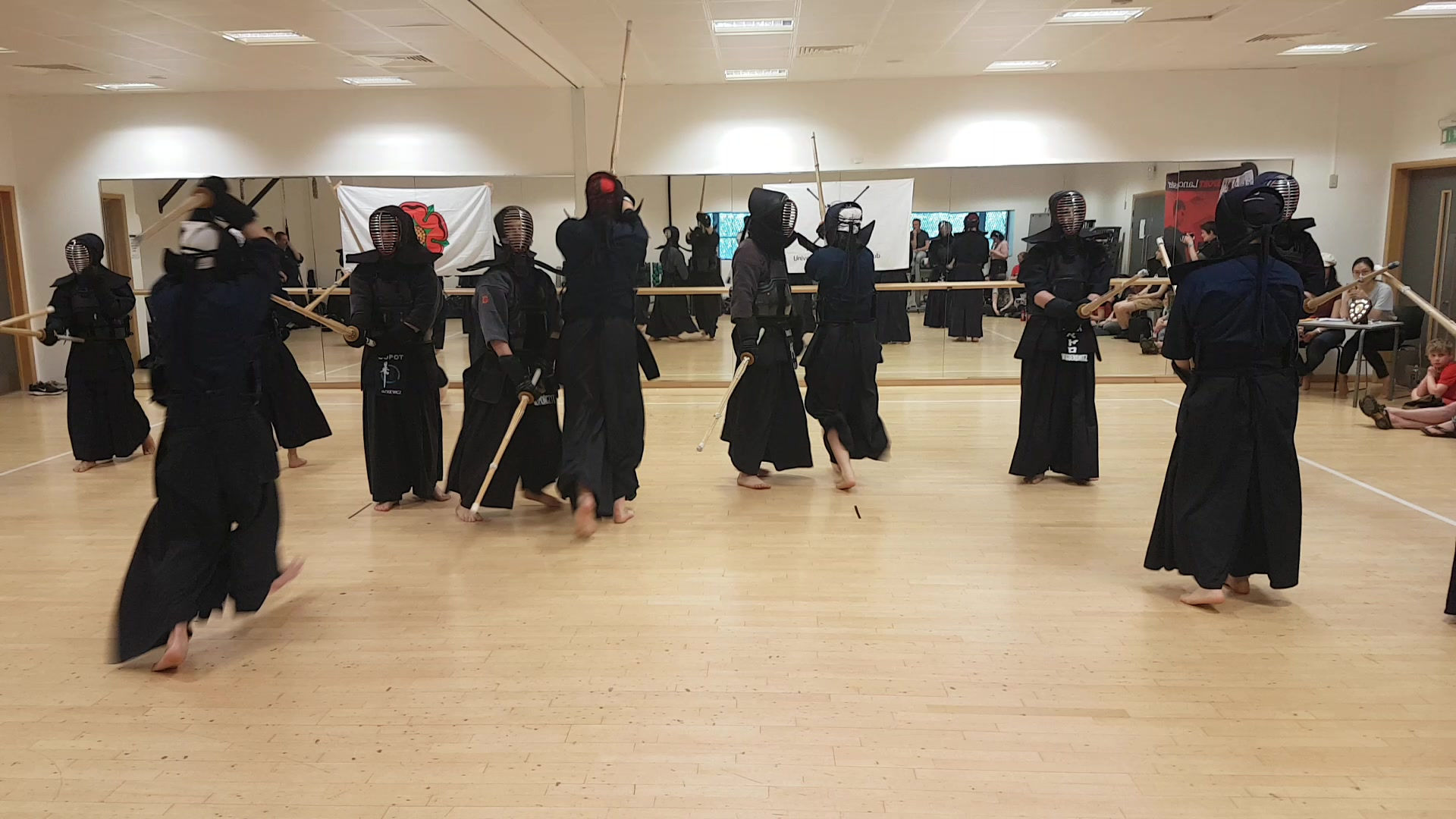
Glossary
When people start kendo, it can be a little daunting - especially when someone starts shouting Japanese words at you! It takes a while to learn and get used to the terms, but to make things a little easier here are a few commonly spoken phrases during practice!
Commands & Courtesies
ONEGAISHIMASU (お願いします)
"Please teach me/practice with me"
Say it when you bow to a partner before starting an exercise (optional)
ARIGATOGOZAIMASU (ありがとうございます)
"Thank you"
Said when bowing to everyone at the end of a session, and when bowing to a partner after finishing an exercise
HAJIME (始め) | YAME (やめ)
"Begin" "Stop"
REI (礼) | SEIRETSU (整列)
"Bow" "Line up"
Standing & sitting Said at the start and end of a session
SEIZA (星座)
"To sit in a kneeled position"
Can be used as a command to do so, or alternatively, CHAKUZA (着座) is used instead.
KI (W)O TSUKE (気を付け) | MOKUSO (黙想)
"Attention" "Meditation"
Also the command to meditate
SHOMEN (正面) | SENSEI (先生)
"Front/head of the dojo" "Teacher, leader"
The one who leads the session
OTAGAI (お互い)
Lit. "each other"
Here, it means "everyone else" when bowing
SENPAI (先輩) | KOHAI (後輩)
"Senior" "Junior"
Don't be afraid to ask
them for advice! Strive to help them
KAMAE-TE (構えて)
"Assume CHUDAN-NO-KAMAE"
See below
SONKYO (蹲踞) | OSAME-TO (納めと)
"A squatting posture" "Put your sword away"
To show respect before an exercise/match Often in SONKYO
Stances & Suburi
A "suburi" (素振り) is a repetitive cutting exercise to loosen up the muscles and practice precision in cuts. Usually done as part of warm up at the beginning of the practice and with a shinai.
CHUDAN-NO-KAMAE (中段の構え)
Lit. "Middle guard"
This is the standard kendo form; balances attack and defence
JODAN-NO-KAMAE (上段の構え)
Lit. "Upper guard"
A form with your hands raised. Can be used in fencing, but best-known for starting HAYASUBURI (see below)
JOGEBURI (上下振り) | NANAMEBURI (斜め振り)
"Basic suburi" Same as JOGEBURI, but cutting diagonally
SHOMEN SUBURI (正面素振り)
A basic "men" cut without an opponent
(ZENSHIN) KOTAE-MEN ((全身) 答え面) | (ZENSHIN) KOTAE SAYU-MEN ((全身)答えさゆ面)
"Men" cuts, forwards and back "Men" cuts, forwards and back, cutting diagonally
HAYASUBURI (早素振り)
A fast suburi with big cuts as you jump forwards and backwards
Keiko Exercises
"Keiko" (稽古), or "practice" is made up of various exercises which train various aspects of kendo. There are various exercises, we do every keiko. Here are a list of a few, and also some helpful related terms.
MOTODACHI (元立ち) | SHIDACHI (氏立ち)
"Teacher" "Student"
The one who receives cuts The one who makes cuts
UCHIDACHI (打太刀)
"Teacher"
During KATA, the one who strikes first
KIHON (基本)
Lit. "Foundation"
The act of making simple cuts against a partner
UCHIKOMIGEIKO (打ち込み稽古)
Exercise: Responding to openings
The MOTODACHI opens and the SHIDACHI makes the corresponding cut
KAKARIGEIKO (掛かり稽古)
Exercise: SHIDACHI makes openings and cuts with great speed. Continuous.
JIGEIKO (自稽古)
Lit. "free practice"
Free sparring, but the time can also be used to practice certain techniques covered during keiko.
KIRIKAESHI (切り返し)
Lit. "Returning cuts"
Exercise: A cut to the "men", followed by several KOTAE SAYU-MEN forwards and backwards.
KATA (方)
Exercise: Non-contact, technical training using bokken.
Numbers
ICHI (一) | NI (二) | SAN (三) | SHI (四) (NOT YON)
"One" "Two" "Three" "Four"
GO (五) | ROKU (六) | SHICHI (七) | HACHI (八)
"Five" "Six" "Seven" "Eight"
KYU (九) | JYU (十)
"Nine" "Ten"